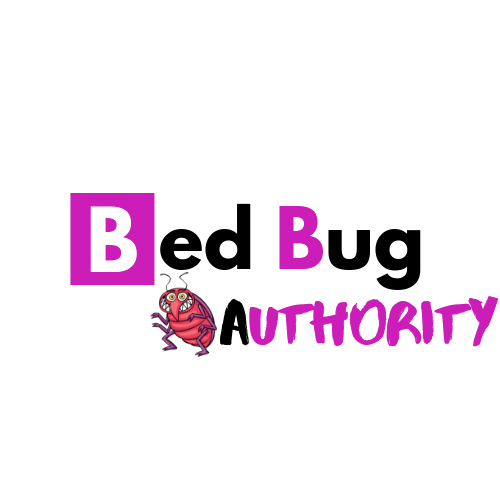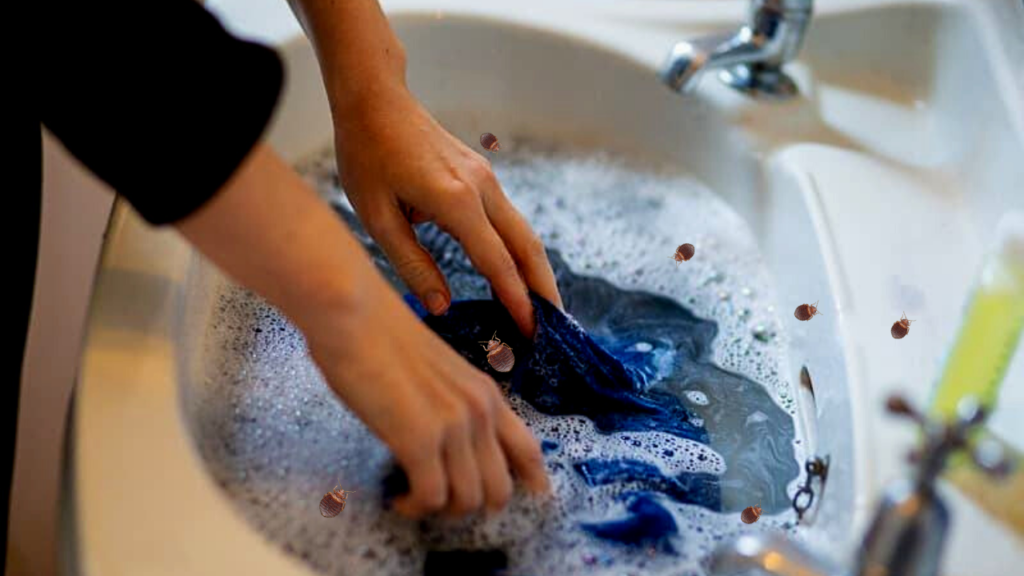KILLING BED BUGS AT HOME
Now that you have a bed bug infestation, how do you get rid of them? Bed bugs and dryer sheets are a combination that is going around on the internet. But with endless lists of household hacks flooding our inboxes and social media feeds, could they be connected in some way? The answer is that although dryer sheets are on a list of home remedies to combat bed bugs, the bad news is, many of these ideas are ineffective in controlling this very persistent pest.
Despite what we may think that our home could never have bed bugs, these pesky critters do sometimes find their way in. And when they do, many of us are left to wonder how we can efficiently extinguish these bugs. You might wonder if bed bugs could survive a wash in your washing machine. Are there products and methods that can kill both bed bugs and their eggs? If bed bugs are living in your home, can they possibly be hiding in the folds of my clothes?
We will separate fact from fiction in this post to answer some of the most common questions about these pesky pests.
How Long Do Bed Bugs Live On Clothes?
Bed bugs are capable of living two to three months without a blood meal. In colder temperatures, however, these pests can survive up to 18 months without food, since they are cold-blooded and their metabolism can slow down. Under normal circumstances, bed bugs feed once every five to ten days.
Bed bugs are normally most active about an hour before dawn, although they can feed anytime if they are hungry. When a bed bug feeds, which usually takes about five minutes, it will retreat back to its hiding spot. Because bed bugs don’t like heat, they won’t stay on your body as ticks or lice might.
Since our body heat is too warm for bed bugs and we move too much, these creatures are unlikely to hitch a ride on you or your clothing. These pests are more likely to make their way into your home on a backpack, briefcase, purse, suitcase, mattress or a used piece of furniture. In some cases, we can bring in bed bugs on clothing, so if you are concerned about an infestation, you can always launder items with hot water or dry them with high heat before bringing them into your bedroom.
How Do You Get Rid Of Bed Bugs In Clothes?
Chances are that Bed Bugs can live through a cycle in the washing machine. The truth is that while washing your clothes or linens will kill most of the bed bugs, the heat of drying your items is what will ultimately exterminate any and all remaining bugs. As we mentioned before, bed bugs do not like heat.
If a bed bug can survive the spin cycle, machine washing your clothes and linens and any other machine-washable item is the first step you’ll want to take if you suspect you have these pests in your home. It’s also a strong preventative measure you can take to keep them out in the first place. There are, however, a few specific steps to consider when washing items to rid your home of bed bugs.
SORTING YOUR CLOTHES
Once you’ve identified the infested area, sort your clothes the way you normally would when washing clothes. Separate your clothes into colors, whites, delicates and so forth. Place each category in its own plastic bag to transport your laundry to the washer and dryer; sealing the bags shut will prevent bed bugs from moving into other rooms in your home or the public laundromat. Before you begin washing, be sure to identify the washing instructions to know the highest wash and dry temperatures possible for each sorted pile. Keep in mind that if you have a dry clean only pile, those items will only be placed in the dryer.
WASHING AND DRYING YOUR CLOTHS
After putting each pile into the washer (or into the dryer for dry clean only items), it’s important you put the bags in which you transported your laundry into another clean bag. Then dispose of both bags to avoid spreading any bed bugs.
Before you begin washing and drying, set the temperature to the hottest temperature each category can safely tolerate. For dry clean only items, set them in the dryer for 30 minutes on medium to high heat. This temperature will kill the bugs.
STORING YOUR CLOTHES
Once dried, fold your clothes immediately and store them in a new, clean plastic bag until you are certain the infestation has been controlled. Remove the clothes as needed from the bags. After you have handles the infestation, you can take clothes out of the plastic bags and back into your closet or dresser.
Can Bed Bugs Survive In Water?
Bed bugs can, in fact, survive in water. It simply depends on the time they’ve been in or under the water, and if they were floating. When washing your clothes it is assumed that bed bugs are drowning, as they are likely under the water for about an hour. That’s why washing your clothes kills most bed bugs living on your clothes and linens. If a bed bug is floating, it has access to air, and can most certainly survive.
In one study, researchers soaked bed bug-infested clothes for 24 hours in cold water without detergent. Although the bed bug eggs survived, all the nymphs and adults were killed.
It’s important to know that bed bugs that are able to float are typically those who have not had a meal, as they are very light and their bodies can lay flat. While a bed bug can float, its survival is dependant on the temperature of the water. Bed bugs have a much higher chance of survival if they are floating on cold water. In most cases, bed bugs won’t survive much time in the water, especially if it’s hot.
What Kills Bed Bugs and Their Eggs?
When facing a bed bug infestation, you need to act quickly to control the problem. While there are many at-home remedies you can try, be sure to do your research to know which do-it-yourself treatment will actually work and which ones will waste your time—and your money. Let’s start with a few of these remedies that simply don’t work:
DRYER SHEETS WON’T KILL BED BUGS
Contrary to what many people believe, placing dryer sheets on furniture or in your closets to repel bed bugs simply doesn’t work. The same can be said for plant oil-based repellents containing pyrethroids or plant oil. Based on research conducted, no data shows that either method will prevent a bed bug infestation. Although there have been reports about it working in some cases those reports weren’t verified.
MOTH BALLS AND OTHER HOUSEHOLD CLEANING PRODUCTS ARE INEFFECTIVE
In another study that was done to show whether mothballs could be used to control or repel bed bugs. The study indicates that after one week, less than 50% of bed bug adults had died as a result of the use of mothballs. The mothballs had no effect on the bed bug eggs.
Similar studies tested rubbing alcohol and common house cleaning products. Like mothballs, spraying rubbing alcohol directly on potentially infested areas only killed, at maximum, half of the bed bugs. Furthermore, due to the fact that it is highly flammable, rubbing alcohol should be avoided and not used to prevent or control bed bugs. Bed bugs had an even higher survival rate when tested against house cleaning materials. Researchers from the study tested a number of disinfectants, and in all cases, bed bugs survived direct spray treatment.
FOGGERS WON’T HELP, EITHER
Many people use foggers to control indoor pests, but according to a study done by Ohio State University, they do nothing to control or prevent bed bugs. More importantly, using multiple foggers can put you at risk of other problems, including a house fire. Another thing with this tactic is that it may make the problem worse by scattering the bed bugs to other areas of your home that weren’t infested before.
We’ve discussed methods that don’t work and debunked a few myths, let’s see some ways homeowners can address an infestation.
FREQUENT WASHING AND DRYING CAN KILL BED BUGS AND EGGS
Washing and drying your clothes and linens in hot water is an effective way to prevent and kill bed bugs and their eggs. It’s also important to wash and dry any other washable fabrics in your home, including items like couch covers.
PROPER STORAGE CAN PREVENT BED BUGS FROM SPREADING
While you’re treating your home for bed bugs, one of the more effective ways to keep bed bugs out of materials that have already been washed is to store clothes and linens in plastic containers or tightly sealed in a heavy-duty plastic bag.
STEAMING AND VACUUMING CAN INTRODUCE HEAT
Like we already know, bug bugs do not like heat. Introducing high temperatures can be an effective way to prevent and kill bed bugs. If you want to try the DIY approach, you can steam areas bed bug might hide, including on your sofas, mattresses, bed frames and carpeted areas, too. Be careful with this because extreme heat can potentially damage delicate fabrics.
If bed bugs in your home, vacuuming can eliminate live and dead bugs and their shed skins. Vacuum cracks, seams, zippers, bed trims, upholstered furniture and anywhere you think bed bugs could potentially be hiding.
The Answer To Your Bed Bug Problems
Because bed bugs are so difficult to handle when using common home remedies that don’t work. By taking the DIY approach and using an integrated pest management approach is an effective, long-term treatment solution. When doing this your Bed Bug problem can be a thing of the past.











